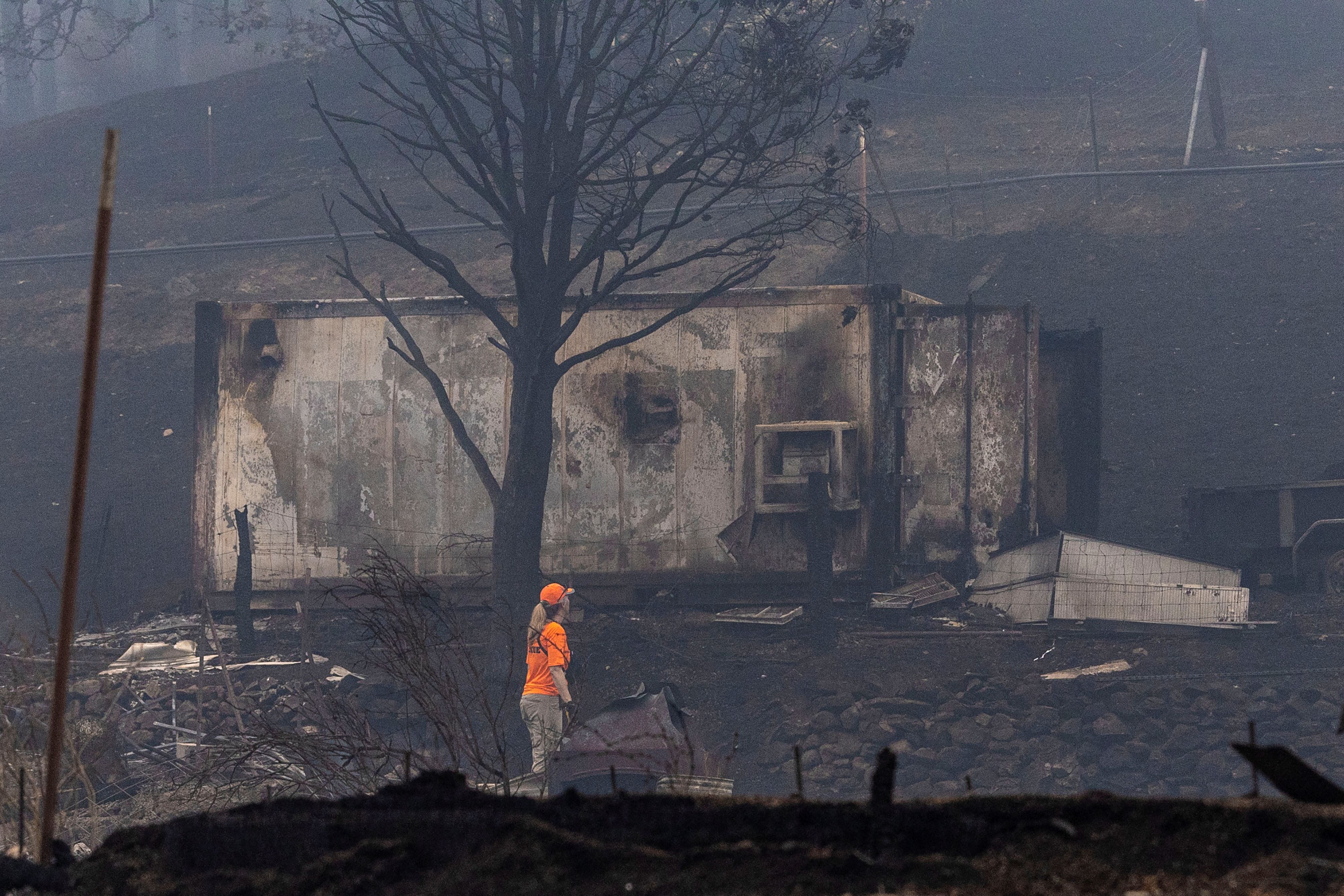كلما اشتد فصل الصيف تشتعل الحرائق في أماكن مختلفة من العالم مخلفة كلفة بشرية ومادية كبيرة. يحتاج الصحفيون، بالإضافة إلى المعرفة المرتبطة بالتغير المناخي، إلى توظيف البيانات لإنتاج قصص شريطة أن يكون محورها الإنسان.
في نشرات الأخبار، نشاهد التقرير تلو الآخر عن إجراءات التدخل لإخماد الحرائق في هذا البلد أو ذاك، وإذا ما اطلعنا على خريطة الحرائق هذا العام، يمكن أن يبدو لنا أن العالم يشتعل. وهنا يطرح السؤال: كيف يمكن للصحفيين أن يستخدموا البيانات لرواية قصص حول الحرائق؟
قبل أن أجيب عن هذا السؤال، هنالك تساؤلات أخرى تتبادر إلى ذهني، هل إن العالم يشتعل فعلا؟ هل الحرائق هذا العام أكثر من السنة الماضية ومن العقد الذي قبلها؟ وهل إن نسق اندلاع الحرائق في الغابات بالخصوص والحرائق الكبرى في ارتفاع؟ ما المساحات الخضراء التي خسرناها؟ أين تتركز الحرائق؟ هل هي حوادث معزولة أم مترابطة؟ هل هي بفعل فاعل أم نتيجة التغيرات المناخية؟
هذا ما تساعدنا البيانات على أن نقوم به؛ حتى نكون أكثر دقة ونوسع زاوية الطرح ونروي قصص كل أشجار الغابة بدل الشجرة التي تخفي الغابة المحترقة فقط.
لا بد لنا من البحث عن البشر وراء الأرقام، عمن عايشوا هذه الحرائق وتضرروا منها. قد نعثر أحيانا على قصة إنسانية ممتازة عبر البحث في قواعد البيانات. مهما كان البرنامج الذي تعمل عليه، لا تنس أن جزءا من العمل يمكن أن يستوجب التنقل إلى الميدان.
فتش عن صورة أوسع
تحولت الحرائق كل صيف إلى إحدى القصص الثابتة التي على الصحفيين التعاطي معها. بالرغم من أن هذه الأسئلة التي طرحتها يمكن أن نجد إجاباتها في البيانات، إلا أن التفكير في رواية قصص مدعومة بالبيانات عن الحرائق ليس دائما الفكرة الأولى التي يمكن أن يفضي إليها اجتماع عصف ذهني في غرفة الأخبار. أول ما يخطر ببالنا عندما نتناول الحرائق في تغطياتنا الصحفية إلى جانب التغطيات الميدانية هو التفكير في أسئلة مثل: من المسؤول عن الحريق؟ أو كيف بدأت النيران؟ أو ما هي الخسائر المترتبة عليها؟ ولكن ماذا إن روينا قصة حريق أو مجموعة من الحرائق بالبيانات؟

أقترح عليك هنا مجموعة من الزوايا المختلفة لرواية قصص الحرائق بالاعتماد على البيانات. من الزوايا التقليدية التي يمكن تناولها هو البعد الزمني للحرائق. ثمة انطباع عام بأنها في تزايد، هل فعلا الأمر كذلك؟ وهل إن عددها في ارتفاع في كل مناطق العالم أم في مناطق محددة؟ في بلدك هل تشهد ارتفاعا؟ وهل إن عدد الحرائق ارتفع أم المساحات التي تأتي عليها هي التي توسعت؟
إن توفير سياق زمني للحرائق يعكس لنا هل هي بصدد التحول إلى ظاهرة تصعب السيطرة عليها أم إننا نعيش سنويا نفس معدلات الحرائق. وأيضا يمكن التفكير في الزمن من منطق الأشهر أو الفصول، فهل البيانات تخبرنا أن الحرائق تتزايد في الصيف بالفعل أو في فصل آخر، وفي شهري يوليو/تموز وأغسطس/آب أم في أشهر أخرى. هنا يمكن أن نبحث في قاعدة بيانات تفرد الامتداد الزمني للحرائق لخمسين أو مائة عام ويمكننا عندها أن نخرج باستنتاجات مفيدة.
الزاوية الثانية هي أين؟ يهمنا أن نعرف التوزيع الجغرافي للحرائق داخل منطقة معينة أو بلد معين أو في العالم. يستند التفكير الصحفي التقليدي على معرفة أين تتركز ظاهرة ما. التوزيع الجغرافي للحرائق يمكن أيضا أن يرتبط ببيئة المكان وطبيعة النباتات الموجودة فيه وغيرها من العوامل التي يمكن للمختصين شرحها.
من الزوايا التقليدية التي يمكن تناولها في موضوع تغطية الحرائق هو البعد الزمني للحرائق. ثمة انطباع عام بأنها في تزايد، هل فعلا الأمر كذلك؟ وهل إن عددها في ارتفاع في كل مناطق العالم أم في مناطق محددة؟ في بلدك هل تشهد ارتفاعا؟ وهل إن عدد الحرائق ارتفع أم المساحات التي تأتي عليها هي التي توسعت؟
البعد الثالث إلى جانب المكان والزمان هو ما تؤدي إليه هذه الحرائق، هل يمكن أن نعرف حجم الأرواح التي حصدتها في بلد ما أو في العالم والخسائر الطبيعية والمادية؟ إذ يمكن أن تأتي على هكتارات من الغابات ويمكن أن تكون لها تداعيات صحية طويلة المدى على البشر أو تسبب خللا في التوازن البيئي.
هذه النوعية من القصص لا تتطلب الاشتغال المكثف على البيانات، بقدر ما تتمثل مهمتنا الرئيسية في جمع البيانات وتنظيمها وترجمتها إلى عروض بصرية يمكن أن يفهمها الجمهور ويتصفحها بسهولة.
في هذه الحالة فإن أهم ما نقدمه للجمهور هو ماذا حدث؟ أين؟ كيف تطور عبر الزمن؟ وماذا أنتج ذلك؟ ويكون ذلك مفيدا بالخصوص في التغطيات اليومية، فيمكن أن نصمم حزمة من الرسوم البيانية التي نقوم بتحيينها كلما اقتضت الضرورة.
فتش عن الروابط
والآن لنفكر بشكل مختلف، من يفترض فيه أن يطفئ هذه الحرائق؟ أعوان الحماية المدنية يقينا أو القوات التابعة للجيش في بعض الدول. هناك أسئلة كثيرة يمكن أن تطرح حولهم. أبسطها هل عددهم كاف للتعامل مع ظاهرة الحرائق؟ كيف تطور أسطول سيارات وطائرات الإطفاء؟ هذه القصة تقوم على مقارنة حزم البيانات. وثمة قصة أخرى يمكن أن نرويها أيضا وهي أن نقارن بين عدد الحرائق والمساحات التي تأتي عليها والاعتمادات والتجهيزات الكافية لمواجهتها ومدى توفرها. هل نلاحظ خلال فترة زمنية هامة أنه كلما ارتفع عدد الحرائق ارتفع حجم الأموال والتجهيزات المرصودة لعناصر الإطفاء؟ السيناريو الذي تتزايد فيه الحرائق ولكن تنخفض فيه الاعتمادات هو السيناريو الأسوأ الذي يستوجب ردا من المسؤولين. ماذا لو قارنا بين الاعتمادات المخصصة لعناصر الشرطة في البلاد من معدات ومدرعات وسيارات والاعتمادات والتجهيزات المرصودة لعناصر الإطفاء، هنا سنحاول المقارنة بين السياسات الأمنية والردعية وسياسة مواجهة الحرائق.
في هذا السياق، يمكن أن نضيف بعدا آخر هو إلى أي مدى ثمة ارتباط بين ارتفاع درجات الحرارة وتزايد أعداد الحرائق. ذلك أن بيانات درجات الحرارة حول العالم متوفرة ويمكن أن يجعلنا ذلك نربط بين الحرائق والتغيرات المناخية على فترة زمنية واسعة.
يمكن أيضا أن نقدم عرضا للتوقعات المتعلقة بالحرائق ومعرفة المشهد الذي ستكون عليه الأمور في الأشهر أو السنوات أو حتى العقود القادمة ومقارنة مختلف السيناريوهات الممكنة. المهم دائما هو الحذر في التعامل مع هذه النوعية من البيانات.

فتش عن قواعد البيانات
كنت في طريق العودة إلى المنزل، عندما استمعت إلى أحد الصحفيين في إحدى الإذاعات الخاصة التونسية يتحدث عن لقطة شاشة لخريطة تبين انتشار الحرائق حول العالم. الخريطة صحيحة ولكن الغريب في الأمر أن يعتمد الصحفيون على لقطات شاشة على وسائل التواصل الاجتماعي بدل البحث في قواعد البيانات التي ترصد الحرائق بشكل مستمر.
نتوفر على مئات القصص التي يمكن أن نرويها عن الحرائق سواء كانت مرتبطة بها بشكل مباشر أم لا، بيد أنه علينا تحديد زاوية واضحة والانطلاق من معرفة ما نريد أن يتحقق لدى الجمهور لأنه سيساعدنا خلال مراحل العمل على البيانات.
إن كنت تبحث محليا، ابدأ بالسلطات المعنية مباشرة بالحرائق مثل الحماية المدنية التي تجمع بيانات عن الحرائق بحكم عملها على تطويقها وإخمادها. أما إن كنت تبحث عن إنتاج قصة حول الحرائق في مجموعة من البلدان أو في مقارنة معينة أو حول العالم، فنقدم لك بعض الأمثلة:
● تساعدك هذه المنصة على متابعة التغيرات التي تطرأ على المساحات الغابوية حول العالم وتخصص قسما للحرائق وهي Global Forest Watch. على هذه المنصة يمكن أن تعرف إشعارات الحرائق الأخيرة والحرائق التي اندلعت ومكانها في بلدك أو في العالم، يمكن أن تقارن هذه البيانات بالبيانات المحلية لاحقا. وإلى جانب خاصية الاستكشاف التي تتيحها، يمكن تحميل البيانات عبر هذه المنصة والاشتغال عليها بنفسك.
● Firms من وكالة الفضاء الأمريكية "ناسا" يوفر رصدا محينا للحرائق حول العالم، يمكن تحميل البيانات كما يمكن الحصول على تقارير سنوية بحسب البلد.
● Earth Data من "ناسا" أيضا يضم بيانات عن الحرائق وأيضا توقعات حولها.
فتش عن الإنسان
لا يمكن أن نقول إن عملنا انتهى بمجرد أن تتم عملية تحليل البيانات لأن الحرائق مرتبطة بالبشر، وبالبيئة المحيطة بنا، لذا لا يجب أن تجعلنا الأرقام والإحصائيات نتجاهل القصص الإنسانية التي تختفي وراءها. لا بد لنا من البحث عن البشر وراء الأرقام، عمن عايشوا هذه الحرائق وتضرروا منها. قد نعثر أحيانا على قصة إنسانية ممتازة عبر البحث في قواعد البيانات. مهما كان البرنامج الذي تعمل عليه، لا تنس أن جزءا من العمل يمكن أن يستوجب التنقل إلى الميدان.
فتش عن العروض البصرية
لتقريب الصورة أكثر من الجمهور، من الأفضل اعتماد الخرائط والرسوم البيانية خاصة منها التفاعلية. الخرائط هي وسيلتك الحيوية في الكتابة عن قصص الحرائق، وكذلك الرسوم الخطية أو المخططات المتناثرة التي تسمح لك بعرض العلاقة بين المتغيرات.
الخبر السار في استخدام البيانات لتغطية الحرائق هو أنها ستكون متوفرة لدى الكثير من المؤسسات والمنصات حول العالم التي تعمل على رصد الحرائق ومتابعة تطورها والخسائر التي تنجم عنها وتأثيرها على المساحات الغابوية وعلى التنوع البيولوجي وغيرها. لكن الأهم من العثور على البيانات هو تحديد الأسئلة التي نريد الإجابة عنها وعدم إغفال الجانب الإنساني في القصة.
نتوفر على مئات القصص التي يمكن أن نرويها عن الحرائق سواء كانت مرتبطة بها بشكل مباشر أم لا، بيد أنه علينا تحديد زاوية واضحة والانطلاق من معرفة ما نريد أن يتحقق لدى الجمهور لأنه سيساعدنا خلال مراحل العمل على البيانات. يمكن أيضا أن نستخدم البيانات في التغطيات اليومية ولكن أيضا في رواية قصص معمقة حول الحرائق وعلاقتها بالتغيرات المناخية.







































